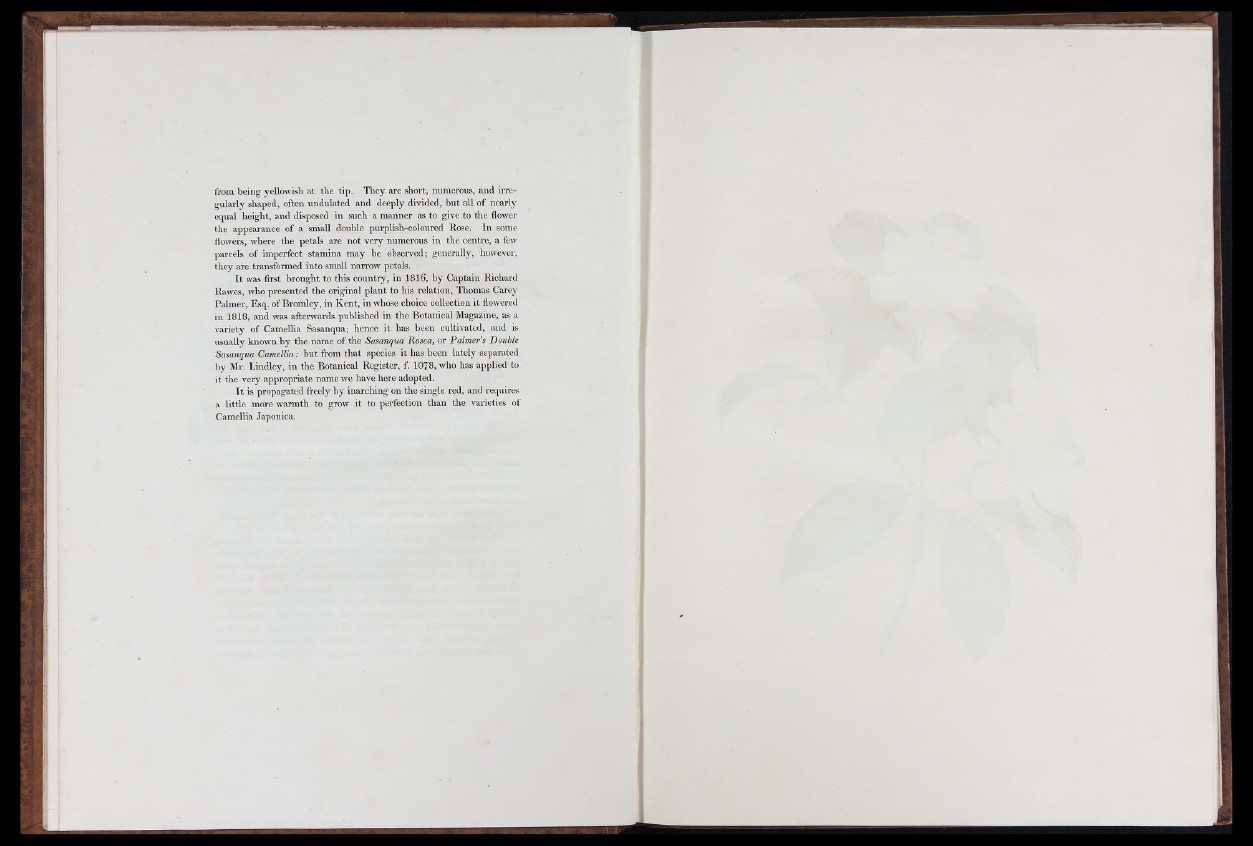
from being yellowish a t the tip. They are short, numerous, and irregularly
shaped, often undulated and deeply divided, b u t all of nearly
equal height, and disposed in such a manner as to give to the flower
the appeai-ance of a small double purplish-coloured Rose. In some
flowers, where the petals are not v e iy numerous in the centre, a few
parcels of imperfect stamina may be observed; generally, however,
they are transformed into small narrow petals.
I t was first brought to this country, in 1816, b y Captain Richard
Rawes, who presented the original plan t to his relation, Thomas Carey
Palmer, Esq. of Bromley, in Ken t, in whc«e choice collection it flowered
in 1818, and was afterwards published in the Botanical Magazine, as a
variety of Camellia Sasanqua; hence it has been cultivated, and is
usually known b y th e name of the Sasanqua Rosea, or Palmer’s Double
Sasanqua Camellia: b u t from th a t species it has been lately separated
by Mr. Lindley, in th e Botanical Register, f. 1078, who has applied to
it the very appropriate name we have here adopted.
I t is propagated freely b y inarching on the single red, and requires
a little more warmth to grow it to perfection than the varieties of
Camellia Japónica.